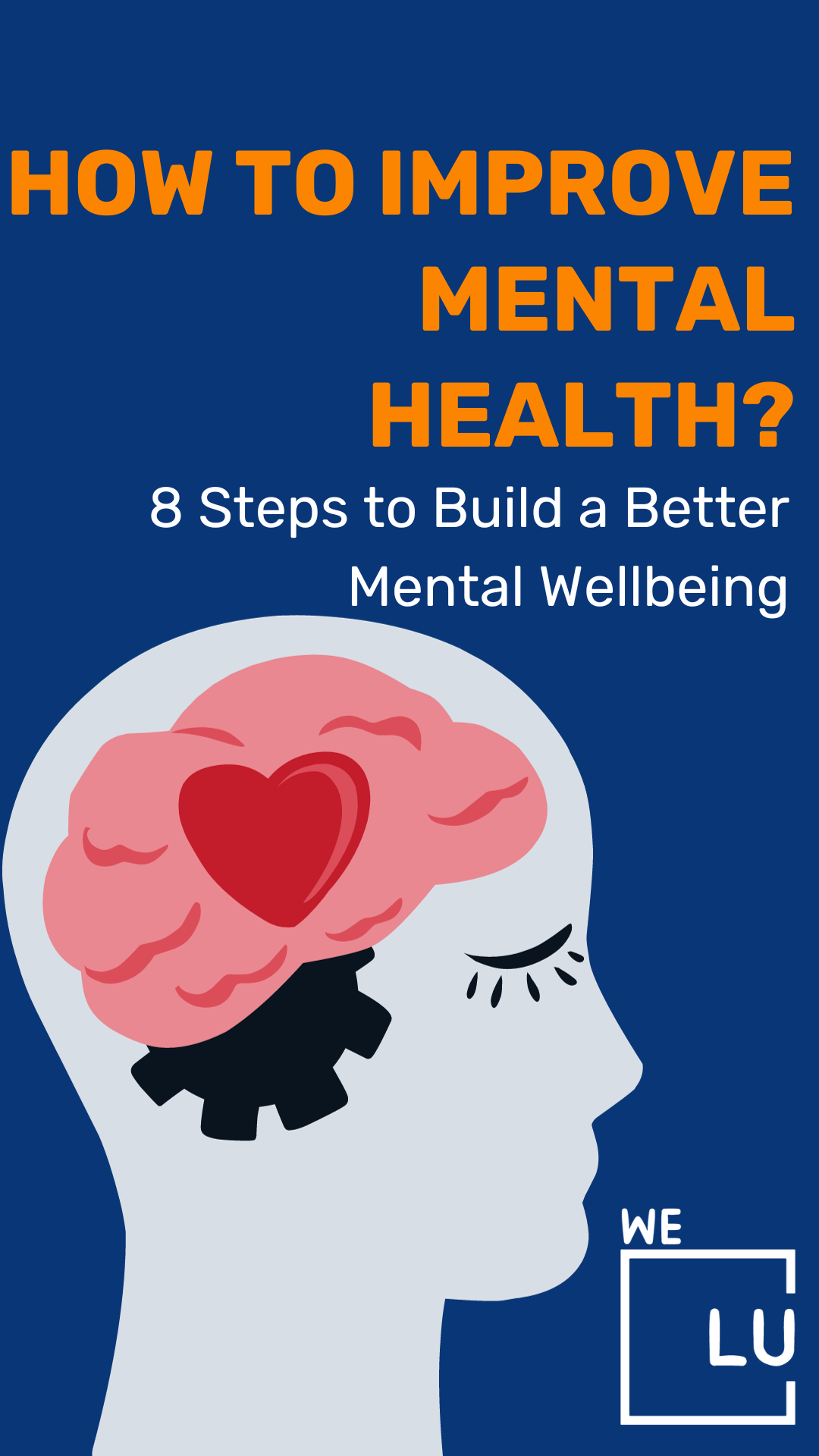What are Bongs For Meth? Pipe For Meth (Meth Pipe)
What Is A Meth Pipe? Meth bongs are tools for smoking methamphetamines, also known as meth. The presence of drug paraphernalia is one of the many indicators of meth usage.
Compared to traditional meth pipes, the glass device delivers a higher dosage of meth to users. In turn, they present a riskier opportunity for meth mouth, addiction, and lung damage.
Yet, meth is a highly addictive drug that is abused on several occasions in the United States. Users seek it out for its rapid and simple high due to its accessibility and affordability. Continue reading to discover more about meth bongs and the harm they can cause.
Is Meth Addictive?
Meth is a stimulant that can cause addiction after just one use and is highly addictive. The drug’s dopamine rush is mostly to blame for this. In addition to making us feel good, the neurotransmitter dopamine influences motivation, memory recall, learning, and reward processing.
Meth addicts continue to use the drug in order to sustain their euphoric and happy sentiments because the rush of dopamine it causes is substantially more than the quantity naturally produced in the brain.
Many Meth users use the substance over the course of many days, during which time they experience constant euphoria. This commonly causes tolerance to develop; after taking the drug repeatedly, a person will require ever-increasing doses to have the same effects as before. Addiction can emerge fast because of the stimulating effects and low cost of the chemical.
It can be challenging to stay upbeat when trying to stop using meth, and when that feeling wears off, withdrawal symptoms including anxiety, insomnia, lethargy, and depression may manifest. The devastating symptoms of withdrawal encourage abusive conduct and raise the likelihood of bingeing. A person’s dread of withdrawal and meth cravings can take over their lives if their reward system becomes dependent on the drug.
Symptoms Of Meth Addiction
Due to its significant psychological and physical toll on the body, meth is one of the most lethal substances on the market. These symptoms and warning signs can be recognized in a variety of ways since meth has a significant impact on a user’s body and brain.
One of the first indications that someone is using meth is a sudden loss of interest in things that were formerly important to them. Meth use and pursuit will start to take precedence over personal interests, interpersonal relationships, and career goals.
The more time someone spends using Meth, the more obvious it becomes. Many people may initially try to hide their drug usage. Because of the molecular alterations brought on by methamphetamine, what was once recreational drug use may now take precedence in one’s life.
Is Meth Physically Addictive?
Irrefutably, “yes” is the short answer to the question “Is meth physiologically addictive?” The chemistry of the brain is affected by methamphetamine interaction. No matter how they take it, the drug always enters users’ bloodstreams.
The stimulant’s effects on the body’s central nervous system increase dopamine levels. The body and brain become hooked when the drug activates these “feel good” sensors, which ultimately leads to users becoming dependent on the drug for it to work as intended.
Meth addiction is easy to get and spreads quickly. But quitting drinking is much more challenging. The body will attempt to self-correct, but an abrupt halt will have harmful effects. This causes severe withdrawal symptoms to appear.
What Are The Signs Of A Meth Addiction?
Meth abusers and addicts will show a range of behavioral and physical signs. Among the most typical meth symptoms are:
- Hyperactivity
- Twitching, facial tics, jerky movements
- Meth High Symptoms: Paranoia
- Dilated pupils
- Noticeable and sudden weight loss
- Skin sores
- Rapid eye movement
- Reduced appetite
- Agitation
- Burns, particularly on the lips or fingers
- Erratic sleeping patterns
- Rotting teeth
- Outbursts or mood swings
- Extreme weight loss
Another blatant indicator of meth usage is “tweaking,” a period of anxiety and insomnia that can last for three to fifteen days. When a meth user can no longer get the rush or high, tweaking occurs at the end of a drug binge.
Tweaking can have psychologically harmful outcomes like paranoia, irritability, and bewilderment due to the need to use it again. Furthermore, hallucinations and a penchant for violent behavior might result from meth-related tweaking.
Why Is Meth Addictive?
Another sign that someone is using meth is the crash phase. During this period, Meth stops feeding the body with dopamine, leaving the body incredibly exhausted. A crash is characterized by protracted periods of sleep, intense drug cravings, and depression and can last for one to three days.

Skip To:
Learn More:
- Do Crystals For Depression Work?
- Depression and ADHD: What’s the Link?
- Autism and Depression Connection, Diagnosis & Treatment
- Signs of Depression in Men, Causes, & What to Know
- Rehab for Depression & Anxiety Treatment
- What is the Best SSRI for Anxiety?
- Social Anxiety Disorder
- Grounding Techniques for Anxiety Attacks
- Mental Health Poems that are Powerful and Healing
- Short-Term Disability Mental Health
Get Help. Get Better. Get Your Life Back.
Searching for Accredited Drug and Alcohol Rehab Centers Near You?
Even if you have failed previously and relapsed, or are in the middle of a difficult crisis, we stand ready to support you. Our trusted behavioral health specialists will not give up on you. When you feel ready or just want someone to speak to about therapy alternatives to change your life call us. Even if we cannot assist you, we will lead you to wherever you can get support. There is no obligation. Call our hotline today.
(844) 597-1011Meth Factsheet
What is Meth?
Meth is a highly addictive stimulant that can cause addiction in as little as a single use. This is mainly due to the rush of dopamine produced by the drug. Dopamine is a chemical that’s not only responsible for inducing feelings of pleasure, but also for motivation, memory retention, learning, and reward processing. The rush of dopamine produced by Meth is much higher than the natural amount of dopamine that is produced in the brain, which causes people to continue using the drug in order to keep those heightened and pleasurable feelings.
Meth Effects
Abuse of methamphetamine includes any illegal usage of the drug. When smoked or injected, meth causes a “rush” similar to that experienced when using crack cocaine; this is brought on by an increase in heart rate, blood pressure, and pleasure-inducing neurotransmitters in the brain. Snorting meth produces an ecstatic feeling but not a rush.
The biggest effects are produced by the infusion rush, which can last up to 30 minutes. Depending on how the drug is used, users enjoy a sustained high that can continue anywhere between 8 and 24 hours after the first surge. Meth injection delivers a higher high than smoking or snorting it, although the high lasts less.
Street Names for Meth
Meth and Crystal Meth are chemically identical substances, despite the differences in the structural composition of the two varieties. Methamphetamine goes by the following street names:
- Glass
- Speed
- Ice
- Crystal
- Crank
- Tweak
- Redneck Cocaine
- Chalk
The vast bulk of meth that is sold today comes from imports and clandestine labs. A few people will often generate modest amounts of the material in “home labs” or “stove tops,” where the product is typically cooked. Meth is also made in cartel “super labs,” which use high-end machinery to generate the drug in greater quantities and with superior quality.
The stimulant Ephedrine or Pseudoephedrine, which is present in certain popular over-the-counter cough and cold treatments, is often the main component in meth. Meth labs are famously hazardous due to the toxic and flammable gases and chemicals generated during the production of the drug.
Meth Statistics
550 Million
Meth costs the United States $550 million in drug treatment programs each year.
Source: NIDA
16 Million
According to the 2017 National Survey on Drug Use and Health, 1.6 million people reported using Meth in the past year.
Source: NIDA
964.000 People
An estimated 964,000 people aged 12 and older qualify as having a Meth use disorder in 2017.
Source: NIDA
Meth Addiction Recovery Rates
The statistics on treating meth addiction are similar to those for treating all other addictions. The physical dependence on meth is eliminated during a week of detox, leaving the addict with the disease of addiction. Being a persistent, recurrent mental illness, meth has relapse rates that are equivalent to those of other chronic diseases like hypertension.
The recovery rate for meth is between 40 and 60 percent over the first year of therapy. Even while the meth recovery rate may seem low, it’s essential to understand that because the disease is chronic and relapsing, it may take several treatment attempts before the condition is ultimately under control, according to government groups like the National Institute on Drug Addiction.

Get Your Life Back
Find Hope & Recovery. Get Safe Comfortable Detox, Addiction Rehab & Dual Diagnosis High-Quality Care.
Hotline(844) 597-1011What Does Meth Pipes Look Like? What Does A Meth Pipe Look Like? About Meth Pipes

One of the various pieces of equipment utilized when smoking meth is the meth bong. That is a blatant indication of drug misuse. The bong looks similar to other drug-related equipment, such as cannabis bongs.
The narcotics are contained in a bowl that makes up the meth bong. To make it easier to consume the meth, bong water is also put into the bowl. The bowl is joined to the stem. From the other side of the stem, which has a tube attached, the user inhales and smokes the meth.
The length of the medication equipment ranges from 8 to 12 inches. Smoke stores frequently carry water glass bongs. Nonetheless, some people choose to drink from plastic 1-liter water or soda bottles. Producers of paraphernalia created silicone bongs to reduce breakage.
What Are Meth Pipes Called? What Is A Meth Pipe Called? Meth Pipe Name
Names For Meth Pipes: A pizzo, sometimes referred to as a pilo, oil burner, bubble, tweak pipe, meth pipe, gack pipe, crank pipe, chicken bone, or ice pipe, is a type of glass pipe with a small orifice on top that is used for freebasing narcotics like methamphetamine or crack cocaine.
Crystal Meth Pipe: Dangers and Risks
Electric Meth Pipe: Due to their more potent consumption, meth bongs worsen drug addictions. Users return to the substance more frequently since it is so well tolerated. From strokes to organ failure, crystal meth usage can result in a variety of bodily problems. Here are some other bodily dangers linked to meth.
Meth Water Pipe: Meth Mouth
Meth is known for harming your teeth. The drug’s interference with saliva flow, causes your gums to become dry. In addition, because of the paranoia brought on by the drug, users frequently clench their teeth. If you already have tooth rot due to the medication, grinding your teeth will simply make it worse. Users’ teeth will become discolored in black and develop a receding gum line.
How To Clean Meth Pipe: Lung Complications
Blood vessels contract when smoking ice. Hence, it negatively affects how and where the blood travels to and from your lungs. Inhaled harmful chemical vapors exacerbate lung injury. Smoking meth regularly can cause permanent lung problems and illnesses like pneumonia.
Pipe For Smoking Meth: Heart Issues
Your neurological system is stimulated by meth, which enables your brain to tell your heart to beat more quickly. Your blood arteries become narrower, your heart muscles become weaker, and your blood pressure increases as a result of the medication.
Meth can cause coronary artery spasms, which is one of the dangers it poses to your heart’s health. The latter supplies your heart muscles with blood, and a spasm in them is likely to cause a heart attack. Meth usage significantly raises your risk of heart disease by over 27.5%.
Smoking Meth Pipe: Digestive Issues
The digestive system of meth users would probably strive to remove the harmful substances from their body as a result of the harsh chemicals they have consumed. They will consequently have diarrhea, stomach discomfort, and other digestive issues.
One of these concerns includes intestinal ischemia. It happens when blood vessel constriction reduces the blood flow to your intestines. Users frequently endure cramps as a result of the organ’s poor performance.
Water Pipe For Meth: Kidney Problems
Renal tubular necrosis may result from drugs’ reduced blood supply to the kidneys. Kidney failure that is abrupt or acute might result from the problem. Acute interstitial nephritis is yet another nephrotoxic side effect of meth. It is a condition that damages the kidney’s tubules, which impairs the ability of the organ to filter waste. Meth users’ kidney failure can either be chronic and gradual or severe and sudden.
Meth Water Bong: Skin Complications
Meth Pipe Smoke: Meth has negative effects on your skin after continuous usage in addition to its negative effects on your interior organs. A skin injury can happen directly or indirectly. In the instance of the prior, meth users frequently have visions of bugs crawling across their skin. As a result, they irritate their skin by rubbing and scratching it.
Throughout the “tweaking” stage, itching is common. Users enter the period when they exhibit frenzied behavior. Meth, on the other hand, might indirectly injure your skin by depriving you of nutrients owing to a lowered appetite. In addition to eating poorly, addicts frequently neglect their hygiene.
Signs and Symptoms of Pipe Meth Abuse: Crystal Meth Bongs
Used Meth Pipe: You can use these indicators to corroborate your suspicions if you think someone is dealing with a meth addiction.
Acute Energy
Meth Bong Water: Rapid bursts of energy and action are classic indications of meth usage. The medicine may make the consumer move too much or perform unnecessary tasks. Users frequently fall into a deep sleep after coming down from a high. Post-high leads to significant energy depletion, when you may only wake up to go to the restroom.
Weight Loss
Meth consumption increases frequently causing users to feel less hungry, which causes them to lose weight. Some users also neglect to eat. The medicine speeds up the rate at which your body burns through energy.
Mental Instability
Meth users can be identified based on their behavior. Hallucinations, memory loss, paranoia, anger, and isolation are all indicators of instability. Addicts to meth typically have a high tolerance to the drug. To make the drug more potent and experience the same high, they utilize meth bongs. The drug’s long-term psychological consequences can include sadness, sleeplessness, and, in extreme circumstances, psychosis. Mood swings are another mental characteristic connected to meth users. They might have moments of joy and excitement followed by sharp spikes in rage and violent impulses.
Safety Meth Bong Smoking Tips
Dangers of a Homemade Meth Pipe: Homemade Meth Bongs
Pipes for crystal meth can be built at home or bought in convenience stores, gas stations, and online. They resemble crack pipes, which have a long glass stem, appearance, but meth pipes have a bowl attached to one end. How To Smoke Meth Without A Pipe? Making your own meth pipes makes the risk of injury and infections much higher.
How To Make A Meth Pipe? (Making A Meth Pipe – Diy Meth Pipe) Homemade meth pipes may be made from:
- Tin foil
- Straws
- Light bulbs
- Aluminum cans
How To Clean Meth Pipes? Cleaning Meth Pipe – Cleaning A Meth Pipe With Acetone
Some smokers choose isopropyl alcohol, which is frequently combined with salt, to clean their bongs. This method is quicker than combining vinegar and baking soda, but it is a little more caustic and needs to be used carefully. This kind of alcohol is available in the drugstore or supermarket in your area. At least 71% alcohol should be shown on the label, however, 91% is best for eradicating germs.
Remember that the cleaning procedure will move more quickly with a higher concentration of alcohol. Applying iodine-free table salt will help remove any tar or tough buildup. Alcohol cleaning your glass runs the risk of becoming fairly harmful. When the strength is beyond 70%, it can be very combustible and is not recommended for inhalation. To avoid fire hazards or inhalation, make careful to properly rinse off the alcohol.
High-Functioning Meth Addict
Because of their preconceived ideas about what addiction is, people struggle to understand what it’s like to be a productive meth addict. A meth addict who is still abusing the substance frequently can start the day by using it and continue to do so frequently all day.
Being a stimulant, meth increases a person’s vigilance and energy, allowing them to focus on their responsibilities even while high. Like many functioning addicts, a meth addict who is high functioning may have a solid educational background and a respectable job. They may be effective as well as able to work when under the influence of drugs. Functional meth addicts may be able to maintain a comfortable living and happy relationships with their loved ones in spite of their drug problems.
They would still go to their kids’ soccer games and engage in social events. They have frequent accountability instead of tense relationships or run-ins with the law.
Meth mouth, often known as poor oral health or tooth decay, is one of the most common signs of meth addiction. Although meth mouth is usually referenced in relation to methamphetamine addiction, this type of functioning addict may not necessarily have it. Addicts to methamphetamine who have great levels of care may also maintain excellent oral hygiene. This may make it difficult to identify their drug use.
There is no doubt that functional addiction exists, yet even a high-functioning addict will experience some side effects from continued meth use. Drug use affords them the temporary ability to function and maintain a certain façade. Another consequence of being a high-functioning addict is the conviction that one is essentially immune to or an exception to the dangers of addiction. This is absolutely not true. Like with other narcotics, continued drug abuse can eventually result in dangerous and life-threatening problems.
First-class Facilities & Amenities
World-class High-Quality Addiction & Mental Health Rehabilitation Treatment
Rehab Centers TourRenowned Addiction Centers. Serene Private Facilities. Inpatient rehab programs vary.
Addiction Helpline(844) 597-1011Proven recovery success experience, backed by a Team w/ History of:
15+
Years of Unified Experience
100s
5-Star Reviews Across Our Centers
10K
Recovery Success Stories Across Our Network
- Low Patient to Therapist Ratio
- Onsite Medical Detox Center
- Comprehensive Dual-Diagnosis Treatment
- Complimentary Family & Alumni Programs
- Coaching, Recovery & Personal Development Events
Meth Addiction Treatment
Meth withdrawal management is taking the drug out of the patient’s system as a team of medical professionals helps the patient manage their withdrawal symptoms. The management of meth withdrawal also referred to as detox, is frequently part of the first step of a treatment program for substance use disorders (SUD).
After detoxification, the majority of patients will benefit from additional care, such as inpatient or outpatient rehab. Patients will receive support in choosing the optimal program to address the behavioral and social aspects of their addiction after finishing a medically assisted detox program (as well as other pertinent needs).
Medically assisted detox for meth withdrawal may have the following advantages:

- Risk assessment for medical and mental health issues. Medical supervision can help someone stay safe because meth withdrawal might cause extreme depression or suicidal thoughts.
- Supplying framework and assistance. This can aid in a person’s recovery and help them become ready for additional therapy.
- Removing a user of meth from their environment. This can lessen cravings brought on by environmental cues that might trigger a relapse.
- As necessary, offering dietary assistance. Someone who is battling with meth addiction may need support, such as larger or high-calorie meals, electrolyte supplements, or contact with a food professional. Meth consumption has been linked to weight loss and inadequate nutrition.
As was already said, after completing detox, patients may enroll in inpatient rehabilitation or outpatient therapy. Several behavioral therapies used in professional treatment can offer a number of advantages, including:
- Helping a patient learn ways to prevent relapse.
- Teaching a patient healthier coping and stress management skills.
- Helping a patient uncover and work through the underlying reasons they developed an addiction in the first place.
Inpatient rehab offers the additional benefit of round-the-clock supervision and assistance to help patients be safe and take care of any co-occurring problems that may develop. If a person has co-occurring psychiatric disorders or life-threatening medical issues, this additional help may be very important.
A person who is addicted to methamphetamine may benefit from the following behavioral therapies:
- Cognitive-behavioral therapy (CBT). This aids patients in recognizing negative or unhealthy attitudes and behaviors that fuel their substance usage and helping them modify them. According to some studies, CBT and contingency management are particularly effective in treating amphetamine addiction.
- Contingency management (CM). When someone demonstrates a desired behavior (like passing a drug test), it offers concrete rewards; however, if the desired behavior is not demonstrated, the reward is withheld.
Making ensuring a patient gets enough food and exercise during detox and throughout all phases of treatment is crucial for keeping them healthy as they recover.
Can You Die From Meth Withdrawal?
It’s important to keep in mind that while meth withdrawal might be challenging and uncomfortable, it is not a life-threatening condition. Fatigue, anxiety, and depression are among the symptoms of meth withdrawal that are most common. Even while these symptoms may be unpleasant, they are not harmful.
You can get through meth withdrawal and start down the road to recovery with the right help and direction. Please get professional treatment if you or someone you know is battling meth addiction. There is no shame in requesting assistance. Recall that meth addiction is a serious illness that necessitates medical attention.
Medication For Meth Addiction
Meth withdrawal (Meth Withdraws) can neither be treated with drugs nor can stimulant use disorder be treated with drugs that have FDA approval. If a person undergoes medically supervised detox, they could be given additional medications to treat some of the withdrawal symptoms they might experience, such as headaches or insomnia.
How To Help A Meth Addict? How To Help Meth Addicts?
You must strike a balance between acknowledging their plight and urging them to get assistance if you want the greatest outcomes. Consider these actions to assist your loved one as a guide for your procedure.
- Learn about the condition
- Decide if you will address your loved one’s addiction
- Start the conversation
- Make yourself a priority
World-class, Accredited, 5-Star Reviewed, Effective Addiction & Mental Health Programs. Complete Behavioral Health Inpatient Rehab, Detox plus Co-occuring Disorders Therapy.
CALL(844) 597-1011End the Addiction Pain. End the Emotional Rollercoaster. Get Your Life Back. Start Drug, Alcohol & Dual Diagnosis Mental Health Treatment Now. Get Free No-obligation Guidance by Substance Abuse Specialists Who Understand Addiction & Mental Health Recovery & Know How to Help.
We Level Up Dual Diagnosis Treatment
The definition of dual diagnosis (also referred to as co-occurring disorders) can differ between institutions. However, it is generally described as the specific treatment of someone who has been diagnosed with a substance use disorder and a mental health disorder at the same time. Treating dual-diagnosis clients is a critical aspect of our inpatient treatment experience because co-occurring disorders are strongly correlated with instances of substance abuse.
Creating a treatment plan that addresses the physical aspects of withdrawal, the psychological connection with drug use, and managing underlying mental health disorders is part of setting clients up for success. A thorough mental health analysis identifies possibilities for treatment. Meeting with mental health counselors and medical care providers means access to behavioral therapy and medication treatment. At our dual diagnosis treatment center, We Level Up can implement the highest quality of care.
We recognize the fragile complexities of how mental and substance abuse disorders can influence others and sometimes result in a vicious cycle of addiction. That’s why we offer specialized treatment in dual-diagnosis cases to provide the most excellent chance of true healing and long-lasting recovery.
It can be challenging to accept that you may be living with a mental illness, but once it is properly diagnosed and treated, treating the presenting case of substance abuse can be magnitudes easier. Only a properly trained medical professional can diagnose these underlying conditions. If you believe you are suffering from a disorder alongside addiction, we urge you to seek a qualified treatment center to begin your journey to recovery. Call We Level Up today.
Experience Transformative Recovery at We Level Up Treatment Centers.
See our authentic success stories. Get inspired. Get the help you deserve.
Start a New Life
Begin with a free call to an addiction & behavioral health treatment advisor. Learn more about our dual-diagnosis programs. The We Level Up Treatment Center Network delivers recovery programs that vary by each treatment facility. Call to learn more.
- Personalized Care
- Caring Accountable Staff
- World-class Amenities
- Licensed & Accredited
- Renowned w/ 100s 5-Star Reviews
We’ll Call You
Search We Level Up Bongs for Meth Resources
Sources
[1] National Institute of Mental Health – ‘Depression’ (www.nimh.nih.gov)
[2] U.S. Food and Drug Administration (FDA) (www.fda.gov/)
[3] Depression Treatment » Drug Alcohol Addiction Rehab
[5] NIMH – https://www.nimh.nih.gov/health/publications/social-anxiety-disorder-more-than-just-shyness
[6] Selective Serotonin Reuptake Inhibitors – National Center for Biotechnology Information, U.S. National Library of Medicine
[7] ‘Anxiety Disorders’ – National Institute Of Mental Health (Nimh.nih.gov)
[8] Psychopharmacology of anxiety disorders – National Center for Biotechnology Information, U.S. National Library of Medicine
[9] Products – Data Briefs – Number 379 – September 2020 (cdc.gov) Depression – National Institute of Mental Health
[10] Coping with Stress – Centers for Disease Control and Prevention





